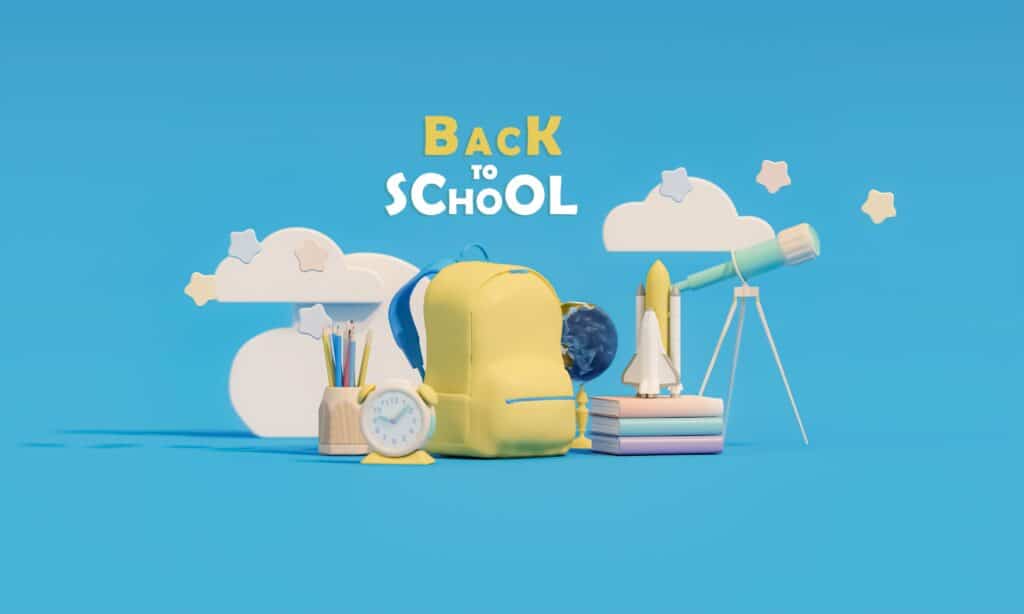There should be five seasons in the culture/world we live in. Winter, summer, fall, spring, and back to school. Each year the buying of school supplies, meeting of teachers, the making of billboards rings in a new school. Each year we prepare ourselves and our students for another school year that we hope will be more successful than the last one. To do that, we need to take a few pages from those who have gone before us on how to be as successful as possible, not only for ourselves but mainly for our students.
On an airplane, they tell you to put on the oxygen first, then help others…that is because if you don’t take care of yourself, you can’t take care of others. The same is true for teaching. Your preparation will significantly impact your students’ outcome of the school year. Yes, many things will happen that will be totally out of your control, but as the famous scientist Louis Pasteur said: “Chance favors the prepared.”
Preparing for the First Day of School
Teachers really need the time before school to prepare, as do administrators, but the preparation needed for when students walk in the door to learn the first day can set the tone for the rest of the year. When students walk in the door, the school and the classrooms need to be ready to go…it sets the tone for the school year.
Having your classroom ready and in order is of utmost importance. This starts with the organization of the classroom. Where will everyone sit? Will there be centers? How will students move around? Where will students pick up paper? Where will students store their backpacks?
Second, procedures need to be in place in the classroom and around the school. For example, in the classrooms, teachers need to know how students will ask questions by raising their hand or by another non-verbal message.
- How will students move from station to station?
- What is the procedure for going to the bathroom? What is the procedure for when students are absent to get their work?
- When is lunch?
- When are specials at the elementary level?
- Where do we go in a fire drill?
Lastly in this section, teachers need to have a couple of weeks of lessons ready to go. Once the students come into the building, life gets very busy. Staying two to three weeks ahead in lessons makes the teacher’s life much easier; there will not be stress over what they will do that day in class.
Where we work in Texas, a full year’s curriculum can be provided to the teachers to help this process so that it is easier to go teach. In the end before students arrive, when lesson plans, classrooms and procedures are in place, odds are a good school year is about to get underway.
Organization Tips
The top organization tip we give to teachers for the school year is the seating chart. It makes clear to students that the teacher is in charge of the classroom. Students will try to sit with their friends or in places they can hide letting the teacher know they make the decisions. A seating chart allows the teacher to set up groups and make needed accommodation for students.
As part of a teacher’s classroom procedures, the organization of certain items around the room can help the flow and ease of movement. As mentioned above cubbies for backpacks, a place where students can pick up work when they are absent, a place to store extra school supplies, etc. can help rooms be organized and less distracting for learning.
Another facet to the organization front are the procedures of how students move around the room and in and out of the room.
- In secondary classrooms, when students enter the room where will their backpacks go?
- Will students pick up a notebook when they enter and then go sit down?
- In elementary schools, how will students get up to go to the cafeteria?
- How will they walk down the hall?
All of the procedures will impact the organization of classrooms for teachers and students.
Self-Care Tips
Part of surviving the school year is dependent on taking care of yourself and your family. Teachers, hear this now, especially young teachers from this administrator with twenty-two years of educational experience…don’t stay at school except if you have an obligation (game or club) past six p.m. unless you have to. You need the time to let your mind rest, eat, relax, sleep, etc. This is the number one way to achieve burnout status. Set those boundaries for yourself and your family.
There is no doubt that exercise, prayer or meditation (whatever you prefer), events with friends, etc., all are good contributors to keeping yourself mentally and physically strong. The previous list provides mental breaks and strength to handle the day-to-day volume of decisions you will make in the classroom.
This next one is not groundbreaking but ironically very beneficial: Take vitamins. It is not a coincidence that teachers’ immune systems are scientifically proven to be very strong. That is because each day, we come in contact with many people, and most of them are little Petri dishes with many germs on and inside of them. Vitamins will not only energize you but help maintain wellness throughout the year.
Finally, the principal I most try to pattern myself after told me this when I informed him that I was thinking about going into administration, however I believe it applies to teachers also, especially those on their feet all day. He told me, “get a good pair of shoes,” Mr. Woodhouse was right. The ability to go home each day without your feet being in pain from walking around all day or developing a plantar fasciitis issue, is invaluable. Good teachers and administrators are on their feet often…get a good pair of shoes.
In the end, surviving the school year is about your preparation, your organization, and your health. Please, please, take care of yourself so that you can take care of those who you have been given charge of this year.
Educators never stop learning; check out our available graduate degree programs to hone your skills and promote lifelong learning and academic excellence.




